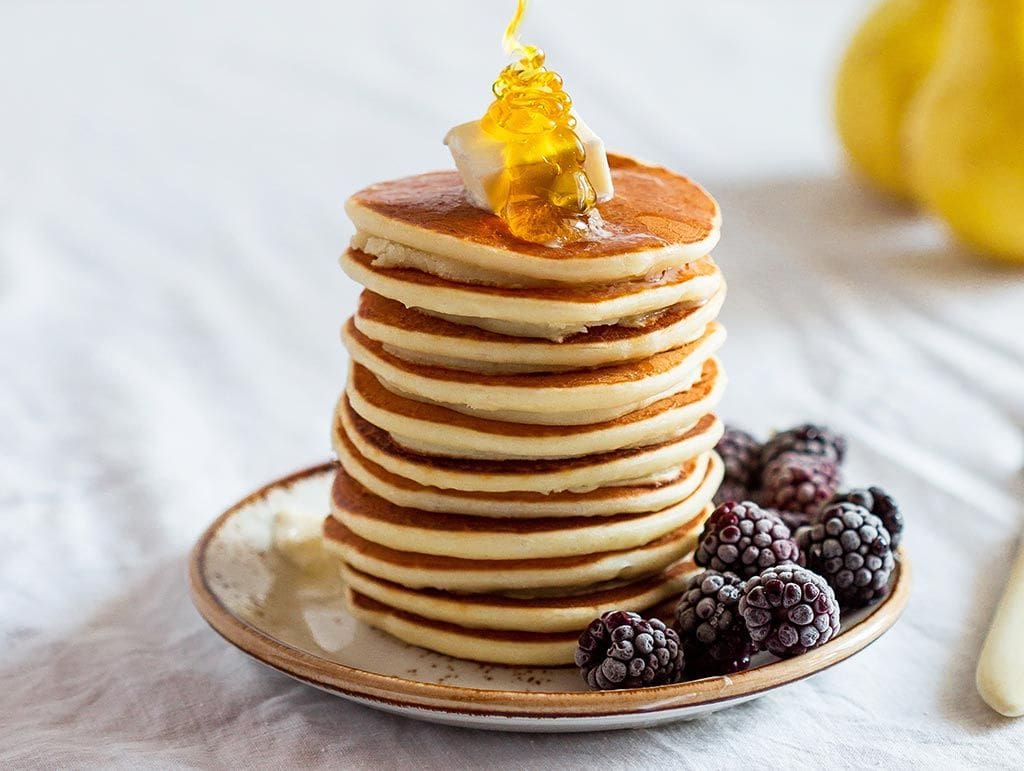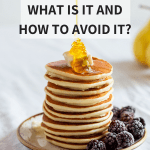
FODMAP stacking: what is it and how do you avoid it
If you have been following the low FODMAP diet for a while, but still have a lot of IBS symptoms, it might be that you are FODMAP stacking, without realizing it. This is one of the most occurring reasons why people continue to have symptoms while they are following the FODMAP diet.
What is FODMAP stacking?
You are stacking FODMAPs when you eat several products in a meal that contain the same FODMAP group. For example: two vegetables that contain the FODMAP sorbitol.
This is not a problem in every case, but when you do this, you might go over your threshold for sorbitol and that can cause symptoms.
When you are just starting out with the diet this is hard, you are having a hard enough time with checking whether products are low FODMAP or not, let alone that you are also going to check how it works when you combine products.
In this blog, I am going to explain to you how to avoid FODMAP stacking.
Make sure that you have the right information
If you have read more of my blogs, you might have read this before, but it is so important. To avoid FODMAP stacking, it is important that you have the right information. There is a lot of FODMAP information available on the internet, but not everything is correct.
To make sure that you have the right information, I advise you to download the Monash FODMAP app (in this blog you can read everything about the app).
This is the app from Monash University, where the FODMAP diet was developed. The information in this app is updated regularly and you can be sure that it is correct.

Green, orange and red products
The app is divided into three kinds of foods: green foods that are low in FODMAPs. Amber foods that contain a moderate amount of FODMAPs, that some people will still be able to tolerate. Red foods that are high in FODMAPs.
When you are in the elimination phase, I advise to avoid the orange and red foods/amounts. When you are further along with the low FODMAP diet, you can test how you react to orange foods.
In the elimination phase you want to be as much symptom free as possible and then it is not smart to test these products already.
What is unclear for a lot of people, is that there are two kinds of green foods in the Monash app:
- Green products that you can eat without limitations: in the app these foods have a green light with the following text: FODMAPs were not detected in this food. Eat freely and according to appetite.
Examples of these green foods are foor example: cucumber and carrot. These kind of foods are the only foods that are free of FODMAPs and that you can eat freely. - Green foods that have a maximum serving size that is low FODMAP: in the app these foods also have a green light, but with a different text: this serving size is low FODMAP and should be tolerated by most individuals with IBS.
Large servings of .. grams contain moderate / high amounts of the FODMAP … and intake should be limited.
You can see this text for example with canned mushrooms. The app says that canned mushrooms are low FODMAP in a serving of 75 gram, but from 200 gram up they contain a moderate amount of mannitol and this can cause symptoms.
This means that you can have 150-175 g of mushrooms without problems, but if you eat more you have to be careful.
Sometimes you see that are product has a green and an orange (and sometimes also a red) light in the app.
For example green beans. Green beans are low FODMAP at 75 g, moderate in FODMAPs at 120 g and high in FODMAPs at 170 g.
In the elimination phase you can better play on safe and don’t eat more than about 100 g per serving.
The first kind of green foods are safe to eat freely. The second kind of green foods are the difficult foods that often lead to FODMAP stacking.
For example: you want to make a dish with eggplant and avocado. The app says that eggplant contains a moderate amount of sorbitol at 182 g per serving. You can safely eat 160 gram of eggplant without getting symptoms.
Avocado is low FODMAP up to 30 gram per serving, but contains a moderate amount of sorbitol at 45 gram or more. If you eat these amounts of eggplant or avocado individually this will not lead to any problems.
But if you combine 160 gram of eggplant and 30 gram of avocado, you might go over your threshold and react. The amount of sorbitol in your total meals stacks up, you are stacking FODMAPs.
The same is true for single foods. Zucchini is safe to eat at 65 gram per serving, but becomes moderate in fructans at 75 gram and high in fructans at 85 gram or more.
If you cut off a piece of zucchini to put in your pasta without weighing it, you might easily take a bit too much and go over your threshold for fructans.

Everybody has a different tolerance level
The difficulty of all this is that everybody has a different tolerance level, so we can’t tell you what will work for you.
One person with IBS can easily eat 150 gram of zucchini without troubles, while another already gets symptoms when he eats 75 grams.
According to Monash University, most people will be able to tolerate the green foods that are limited low FODMAP quite well and will often be able to also eat an amber amount of these foods.
They say that it will usually be the red foods that really contain a high amount of FODMAPs that cause the troubles (such as onion, garlic and beans).
My advice is to be very careful with products that are limited low FODMAP in the elimination phase because you don’t want to keep having symptoms unnecessarily.
How to avoid FODMAP stacking in the elimination phase
In the elimination phase, your goal is to get as much symptom-free as possible. In the reintroduction phase you are going to test FODMAPs and then you don’t want your tests to be ruined because of FODMAP stacking.
In these two phases you want to avoid combining several limited low FODMAP foods in a meal. But how do you do that?
The easiest way to avoid FODMAP stacking is to only use one product from each FODMAP group that is limited low FODMAP in your meal.
Don’t combine two products that contain the same FODMAP. Make sure that the rest of your meal consists of green foods that you can eat freely.
For example: a stir-fry with rice (eat freely), chicken (eat freely), 100 g carrot (eat freely), 75 g green bell-pepper (limited low FODMAP, fructans) and 150 g eggplant (limited low FODMAP, sorbitol)

When you have finished the elimination phase and tested all FODMAP groups separately in the reintroduction phase, you start experimenting with several limited low FODMAP foods in one meal.
For example by eating a larger amount of eggplant and avocado in one meal and testing how you react to that.
I hope that I have clarified the concept of FODMAP stacking for you and that this will help you to diminish symptoms that you still have. If you have any questions, feel free to ask them below!
Together we go for a calm belly!
Subscribe to the Karlijn's Kitchen e-mail newsletter for more tips and recipes and receive the ebook 10 things I wish I had known when I started the FODMAP diet for free!


8 Comments
So anything below 125g of green beans is considered low FODMAP?
I would stay a little below it because at 125 gram it contains already a moderate about of sorbitol. So I would do max. 100 gram.
Thank you so much!
Is acacia root fiber supplement allowed in the elimination phase?
As far as I know acacia root fiber is low FODMAP
Hi Karlijn,
Mooie website!
So, for example – sorbitol, doesn’t it stack with e.g. fructans ?
Greetings,
Michal
If you eat a large amount of foods that are high in different FODMAP groups, this might still cause symptoms or it might not. This also really depends on personal tolerance levels. That’s why this concept is quite difficult.
The idea is that it is safer to stack foods that contain different FODMAP groups than foods that contain the same FODMAP group because then you might go over the threshold quicker and get symptoms.
Thank you for your knowledge. I am new to a low fodmap diet. I’m only on my sixth day, and I’ve had a bad stomach, now I know why. This page has helped me alot.